MONREGALENSE Balbis, 1804
Synonyms :
Oreosedum monregalense (Balbis) Grulich (1984)
Sedum cruciatum DC (1815)
Sedum luteovirens Briquet (1913)
Distribution : South-eastern France, Corsica, north-western to central Italy; shaded rocks in the mountains, dripping wet all the time - no sun whatsoever.
Description (according to IHSP, 2003) :
Perennial weak herbs; stems decumbent and rooting at the nodes, to 5 cm tall, glabrous or almost so.
Leaves alternate, crowded, 5 - 7 mm, oblanceolate, fleshy, smooth or somewhat glandular near the tip, obtuse.
Inflorescences : Flowering branches 10 - 15 cm tall, branched throughout or in the upper parts only, upper parts glandular-hairy, leaves in verticils of (3-) 4 (-5), similar to those of sterile stems, upper leaves hairy, inflorescences lax panicles with cymose branches, bracteate.
FIowers 5-merous, pedicellate, stellate, ± 9 mm diameter, sepals ovate, acute, hairy, petals ovate, white, acute, spreading or slightly reflexed, with greenish hairy keel, 3x as long as the sepals.
Superficially similar to S. alsinefolium.
Ray Stephenson (Sedum, Cultivated Stonecrops, 1994, p 141) :
Sedum monregalense is a very short, slender, bright green, carpet-forming species with whorls of flat, thin leaves which group in fours on the inflorescences and less noticeably on sterile shoots. All parts of the plant, save the leaves, are sparsely pubescent; a little magnification will show lines of hair on the sepals, petals, and inside the carpels. Pubescent inflorescences are lax, and white flowers are carried on long pedicels.
Habitat : This southeast European subalpine grows in shady spots in Italy (Monregal, for which the species is named, is on the Italian Piedmont), southern France, and Corsica.
Main points of distinction : The well-spaced leaves in whorls of four on inflorescences are a very distinct feature only shared with the biennial or annual Sedum cepaea, which starts its life as a flat rosette. Sedum monregalense is tufted in winter and spring, and the imbricate leaves are flat on both the upper and lower surfaces (Leaf shapes, fig. 3ee). 2n = 30.
Variation : Contrasting position and varying amounts of water result in dissimilar plants. In dry, sunny spots, tufts of leaves remain tightly packed throughout summer and turn tan. In this state, plants are shy to flower and can extinguish. Grown in a damp, shady spot, the species is soft, green, and open.
Horticulture : This stonecrop probably requires some protection in areas with extreme winters, and it prefers a shady, damp niche.
S Abetone ski resort ca 1260 m :
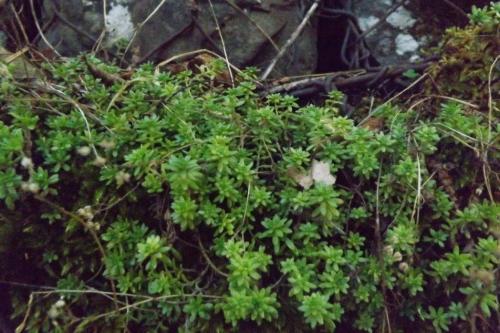
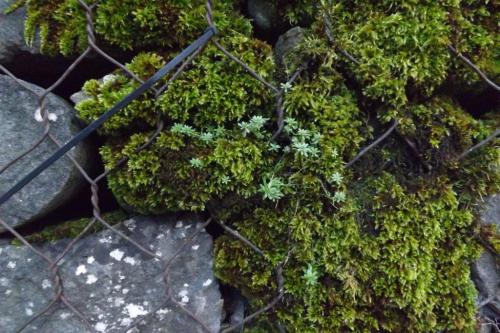
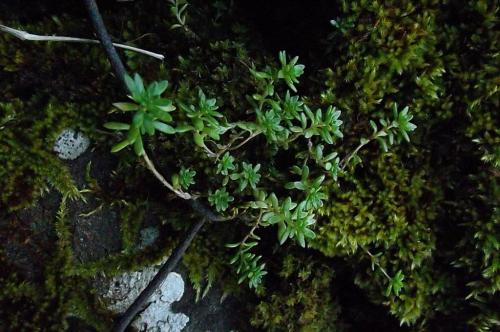
Pso d. Collina ca 930 m :
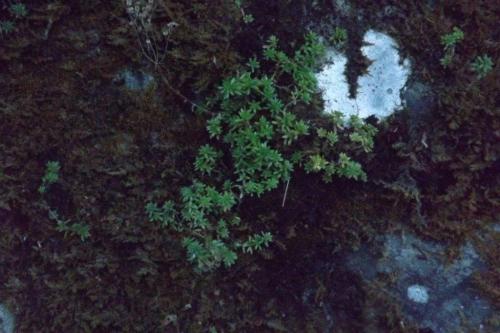
In cultivation :
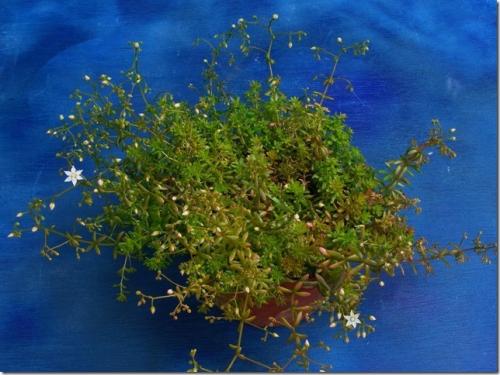
Photos Ray Stephenson
.jpg)
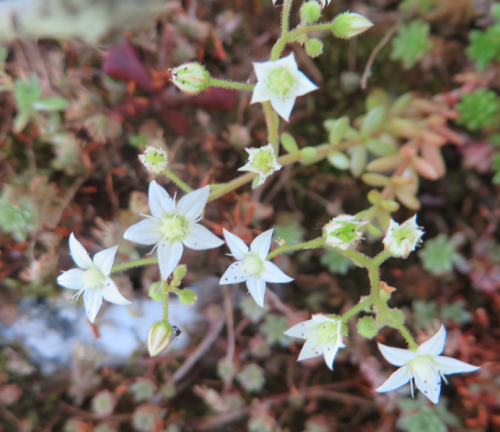
Photos Margrit Bischofberger